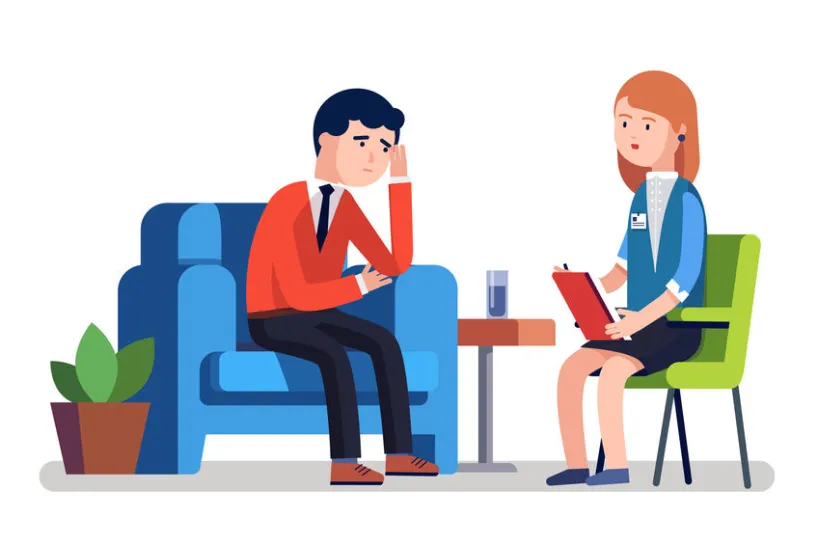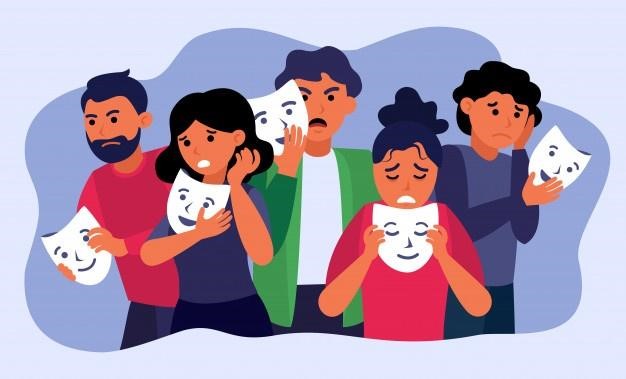A Quick Guide
PTSD or Post Traumatic Stress Disorder is a mental health condition that often develops in people who have gone through some sort of a traumatic event. This could be any life-threatening situation such as war, natural disasters, abuse of any kind, etc. It is important to note that the severity of the condition varies from person to person and if you or someone you know is going through it, consider seeking professional treatment. In this article, we will walk you through what PTSD is, along with its symptoms and treatment options.
What is Post Traumatic Stress Disorder?
You have probably heard of the term PTSD used around though you are confused as to what exactly it is. PTSD is an anxiety disorder that can affect any individual regardless of age if they have undergone a traumatic event and have not been able to recover from it.
So then what exactly is a traumatic event?
It can be any life-threatening or dangerous situation. Children and people that have either gone through or witnessed accidents, natural disasters, abuse, captivity, a serious injury, or physical or sexual assault are more likely to develop PTSD. Other than that there are people that are more prone to traumatic exposure due to their high-risk professions such as emergency medical personnel, military personnel, firefighters, police officers, etc. The treatment for PTSD includes therapy and medication which we will discuss ahead.
- The Diagnostic and Statistical Manual of mental disorders 5th edition (DSM-V) reports that in the US, about 3.5% of the adult population had developed PTSD at some point in their lives.
- The national center for PTSD estimates that around 8 million adults suffer from PTSD in a given year.
- It has been estimated that 32% of victims of sexual or physical assault are more likely to develop PTSD.
Symptoms of PTSD
Usually, the first symptoms start to appear a month after a traumatic event. In some cases, people with PTSD may experience a long duration of time during which their symptoms are less noticeable. Though they may worsen after a while as every individual is different. Other people may have constant problematic symptoms.
Someone with PTSD may have the following symptoms:
Reliving memories
This is the most common type of symptom. It can include
- Having vivid flashbacks of painful memories.
- Having recurrent nightmares.
- Having recurrent intrusive thoughts.
- Having recurrent physical sensations such as sweating, nausea, trembling, chills, heart palpitations, panic attacks, or pain.
Persistent Avoidance
This is another most common type of symptom that includes:
- Avoiding anything or anyone that may remind them of their trauma such as people, places, situations, conversations, objects, and activities.
- Feeling emotionally numb and detached from their feelings.
- Feeling physically numb and detached from their own body.
- Taking part in reckless and self-destructive behaviors such as using drugs to avoid painful memories.
Feeling on edge
This can include:
- Irritability or frequent angry outbursts.
- Panicking if they are reminded of their trauma somehow.
- Hypervigilance that is a high state of arousal in which a person is constantly trying to evaluate possible threats around them. This is also known as extreme alertness.
- Having difficulty concentrating on daily life activities.
- Have sleep problems such as difficulty falling or staying asleep.
Disturbed beliefs and mood
This can include:
- Not being able to recall important details of the traumatic event.
- Have negative beliefs about one’s self, others, and the world.
- Feeling guilty about the traumatic event.
- Constant negative feelings like fear, anger, sadness, and shame.
Treatment for PTSD
Medication and both long-term and short-term therapies can help in better managing the symptoms of PTSD. Though some people may find that they are most effective when used together.

Therapies
Different types of psychotherapies can be effective in the treatment of PTSD. Psychotherapies mostly are talk-therapies. A person may need to try a few of these to see what works best for them. They may choose individual or group therapy based on what they are most comfortable with.
Cognitive Processing therapy
It is a particular type of Cognitive Behavioral Therapy consisting of a 12-week program, with weekly sessions of about 60-90 minutes. It focuses on how a person perceives their traumatic event and then their coping mechanism in response to their emotional and mental experience. This process requires that the therapist and the client work together as a team. So the client can move on from their “stuck points”. Stuck points are basically any recurring thoughts related to the trauma that prevents a person from recovering.
Eye movement desensitization and reprocessing (EMDR)
Now, this type of therapy is mostly used with trauma survivors, especially those individuals who suffer from PTSD. It may take around 3 months of weekly sessions with a therapist. EMDR is an eight-phase treatment approach that addresses the past, present, and future. In this process, a person makes rhythmic eye movements almost identical to rapid eye movement (REM) which creates a similar effect to when the brain processes memories during sleep.
Prolonged Exposure Therapy
This type of therapy, as the name suggests, helps a person confront their trauma. This approach is most effective in people who tend to be more avoidant. It usually involves 8 to 15 sessions consisting of 90 minutes each. In the early stages of the treatment, the therapist will teach the client ways to ease their anxiety through breathing techniques. In the next step, the client will list down all the things that they had been avoiding, and then one by one, they will learn how to overcome those things.
Medication
While there is no specific medication for PTSD, different types of medication may help in improving its symptoms. Usually, if a person has depression or is simply unable to get better through therapies, that’s when a psychiatrist may prescribe medication. Some of the commonly prescribed medication is:
Antidepressants
Antidepressants help manage symptoms of depression and anxiety. They also help alleviate sleep problems and improve concentration. Selective serotonin reuptake inhibitor (SSRI) medications such as sertraline (Zoloft) and paroxetine (Paxil) have been backed by the Food and Drug Administration (FDA) for the treatment of PTSD.
People diagnosed with PTSD have about a 50% chance of meeting the criteria for the diagnosis of a major depressive disorder.
Anti-anxiety medications
Anti-anxiety medication helps in relieving severe anxiety-related problems. Though they have a higher chance of causing addiction in people which is why they are mostly used for a short time.
Other medications
There are various studies that show that Prazosin can reduce or suppress nightmares for people with PTSD. If a person is considering prazosin as an option, they should consult their doctor first about the side effects of the drug depending on their situation.
Lastly, we know that it can be difficult to find the right medication. But mutual discussion between the client and the doctor regarding the effect of the drug can help significantly while choosing the best medication. It has been observed that in a few weeks medication can help improve mood and other symptoms.
If you or any of your loved ones are suffering from PTSD, it is important that you seek help immediately. Oftentimes, people with PTSD feel guilt or shame and blame themselves for what happened. That is why they don’t actively try to take help which can lead them to social isolation. And if you have PTSD, there is help available for you. You don’t have to struggle alone.
Watch: [PTSD Treatment: Know Your Options]
If you are having suicidal thoughts, contact the National Suicide Prevention Lifeline at 1-800-273-8255 for support and assistance from a trained counselor. If you or a loved one are in immediate danger, call 911.
We hope the above article was useful for you in understanding Post Traumatic Stress Disorder PTSD, its symptoms, and its available treatment.



 Gestalt Therapy: All you need to know about it
Gestalt Therapy: All you need to know about it  Trauma and Stressor-Related Disorders: Causes, Symptoms, & Coping Strategies
Trauma and Stressor-Related Disorders: Causes, Symptoms, & Coping Strategies  Teletherapy: The Benefits, Types, Challenges, and Uses
Teletherapy: The Benefits, Types, Challenges, and Uses  Signs of Depression in Men: Recognizing the Symptoms
Signs of Depression in Men: Recognizing the Symptoms  Dissociative Fugue: Symptoms, Causes, Treatment & More
Dissociative Fugue: Symptoms, Causes, Treatment & More  Interpersonal therapy IPT: A brief overview
Interpersonal therapy IPT: A brief overview